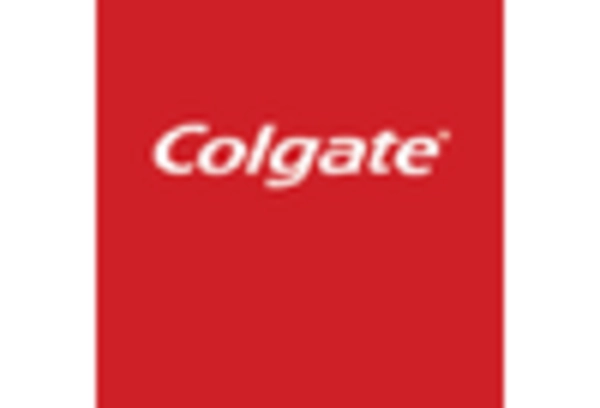Growing Geriatric Population
The aging population in Germany is another critical driver for the sleeping bruxism-treatment market. As individuals age, they may experience various dental issues, including bruxism, which can be exacerbated by factors such as medication side effects and changes in oral health. With approximately 22% of the population aged 65 and older, there is a substantial market for treatments tailored to this demographic. This segment is likely to seek effective solutions to manage bruxism, thereby increasing the demand for specialized treatments. Consequently, dental practitioners are focusing on developing targeted strategies to address the unique needs of older patients.
Insurance Coverage Expansion
The expansion of insurance coverage for dental treatments in Germany is likely to positively impact the sleeping bruxism-treatment market. As more insurance plans begin to include coverage for bruxism-related treatments, patients may be more inclined to seek professional help. This trend could lead to an increase in the utilization of dental services, including consultations and custom mouthguards. With an estimated 40% of dental treatments now covered by insurance, the financial burden on patients is reduced, potentially leading to a higher market penetration of bruxism treatments. This shift in insurance policy is expected to facilitate greater access to necessary care for those affected by bruxism.
Advancements in Dental Technology
Technological advancements in dental care are transforming the sleeping bruxism-treatment market. Innovations such as 3D printing for custom mouthguards and digital scanning for precise fitting are enhancing treatment efficacy and patient satisfaction. The integration of these technologies is expected to drive market growth, as they offer more personalized solutions for individuals suffering from bruxism. Furthermore, the market is projected to reach €150 million by 2027, reflecting the increasing adoption of these advanced treatment options. As dental practices in Germany continue to embrace these innovations, the overall landscape of bruxism treatment is likely to evolve significantly.
Increasing Awareness of Oral Health
The growing awareness of oral health issues among the German population is a significant driver for the sleeping bruxism-treatment market. As individuals become more informed about the consequences of untreated bruxism, including dental wear and associated pain, the demand for effective treatment options rises. Educational campaigns by dental associations and healthcare providers have contributed to this awareness, leading to a projected market growth of approximately 8% annually. This trend indicates that more individuals are seeking professional help for bruxism, thereby expanding the market for various treatment modalities, including mouthguards and therapeutic interventions.
Rising Incidence of Stress-Related Disorders
The prevalence of stress-related disorders in Germany appears to be on the rise, which may correlate with an increase in sleeping bruxism cases. Stress is a known trigger for bruxism, and as more individuals report high levels of stress due to work and personal life pressures, the sleeping bruxism-treatment market is likely to experience growth. Reports suggest that around 30% of adults in Germany experience significant stress, which could lead to a higher demand for bruxism treatments. This trend emphasizes the need for effective management strategies, including behavioral therapies and relaxation techniques, to address the underlying causes of bruxism.

















Leave a Comment